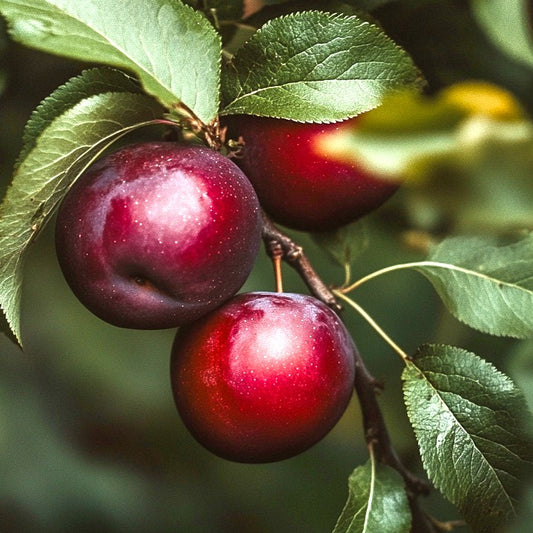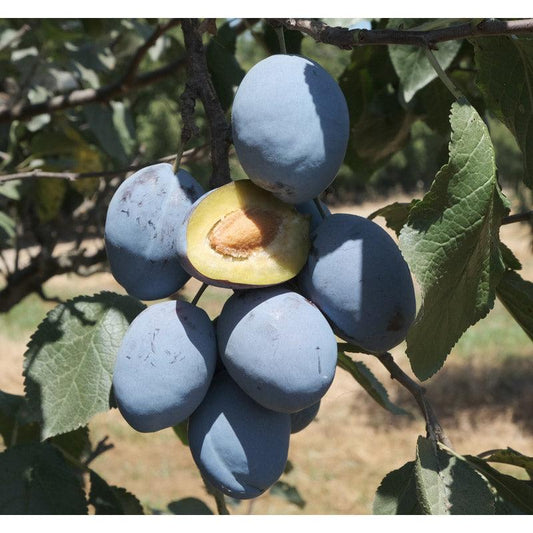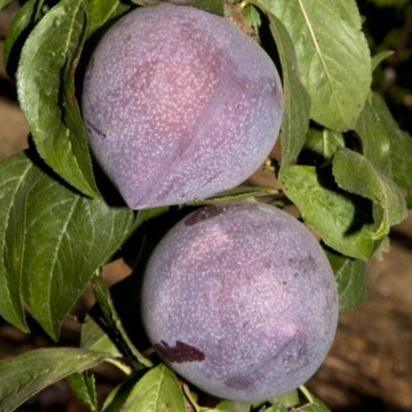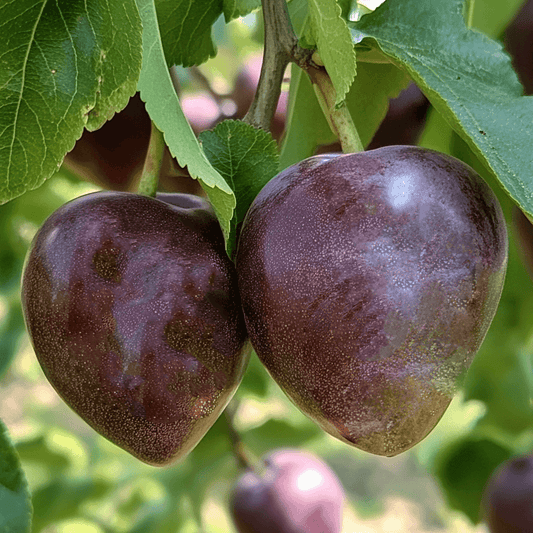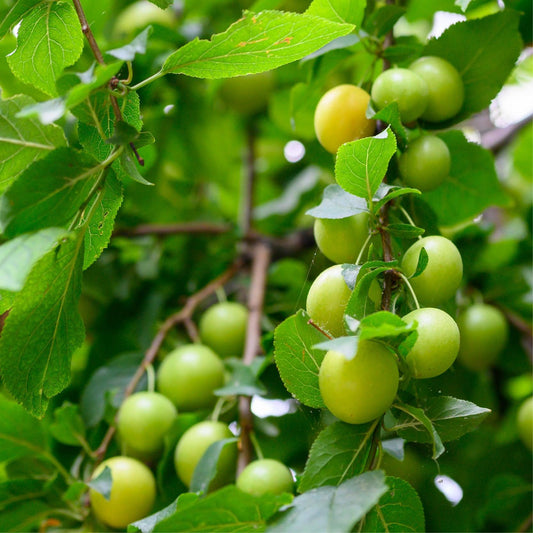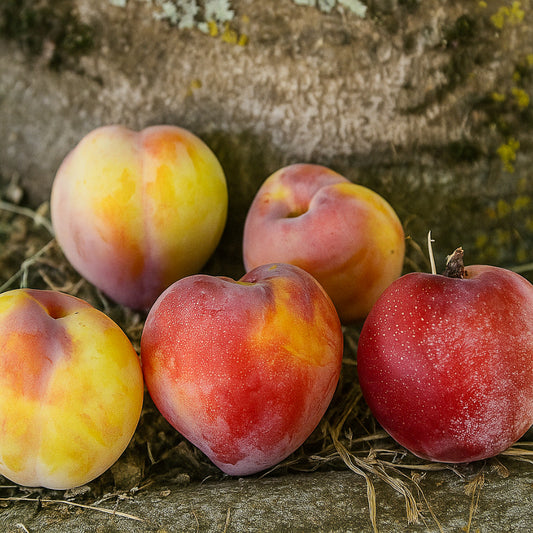Plum Tree Problems and Plum Tree Diseases: How to Identify and Fix Common Issues
Plum trees are beautiful, productive stone fruits—but they can still run into trouble. Maybe you’ve spotted plum tree leaves turning yellow, noticed brown spots, or wondered why the tree flowers but won’t set fruit.
This guide explains the most common plum tree problems, how to diagnose them fast, and simple, organic steps to protect plum tree health all season long. We’ll cover yellowing leaves, major plum tree diseases, and a prevention plan you can follow with confidence.
For planting, site prep, and the basics of growing plum trees, start with this clear primer: Planting and Growing Plum Trees: A Complete Guide.

Yellow Leaves on Plum Tree: What It Means and What to Do
When you see plum tree yellow leaves, it’s your cue to investigate. Gardeners often ask, “why is my plum tree leaves turning yellow?” or “why are the leaves on my plum tree turning yellow?” The short answer: stress. The longer answer: stress from water, nutrition, pests, disease, or weather.
Fast Diagnosis for Yellowing
- Water stress: Roots sitting wet can starve for oxygen; dry soil does the opposite. Water deeply, then let the top few inches dry.
- Nutrient gaps: Pale leaves can signal nitrogen needs; interveinal yellowing can hint at magnesium or iron deficiency.
- Pests: Aphids, mites, and scale sap energy and spread sooty mold.
- Disease: Leaf spot and other fungal diseases can begin as yellow speckling that turns into brown spots.
- Weather: Heat waves, sudden cold, or strong winds can shock foliage.
Fix-It Steps
- Check soil moisture at 4–6 inches deep before you water.
- Feed wisely if a soil test shows deficiencies; use organic fertilizers and compost.
- Improve airflow by thinning crowded shoots.
- Control pests with beneficial insects and organic sprays. Explore neem oil options—a gentle, go-to for many insect issues.
- Mulch to moderate soil temps and hold moisture (keep mulch a few inches off the trunk).
For detailed organic strategies, see Pest and Disease Management for Plum Trees.
If you’re thinking, “my plum tree leaves are turning yellow—now what?” start with water checks and pest scouting. Most cases improve once the root zone and canopy stress are corrected.

Major Plum Tree Diseases (and How to Spot Them Early)
Knowing the usual suspects helps you act before problems snowball. These plum diseases affect both backyard and orchard trees.
Brown Rot
Brown rot is one of the most common tree diseases on plums and other stone fruits. It infects blossoms in early spring and can rot fruit near harvest. Look for blossom blight (flowers browning and sticking), fruit mummies, and tan spore masses.
Prevention: Open the canopy with proper pruning, remove mummies, and time organic sprays from bloom through petals fall if weather is warm and wet. More pruning help here: Pruning and Maintenance of Plum Trees.
Black Knot
Black knot forms hard, tar-like swellings along shoots and branches. It spreads during cool, wet periods.
Action: Prune out knots at least 6–8 inches below visible infection, disinfect tools between cuts, and remove infected wood from the site.
Coryneum Blight (Shot Hole)
Also called shot hole, coryneum blight creates purple or brown spots that drop out, leaving tiny “bullet holes.”
Action: Improve airflow, avoid overhead watering, and time organic fungicide sprays when spring weather favors infection. Rake and discard infected leaves.
Leaf Spot Complex
Several fungal diseases cause leaf spot on plums. Spots may turn yellow around the edges and fall out, thinning the canopy.
Action: Sanitation (leaf cleanup), pruning for light, and preventative sprays when disease pressure is high.
Plum Pox Virus
Plum pox virus (PPV) causes ring patterns on leaves and deforms fruit. It spreads by aphids and grafting material.
Action: Use certified clean stock, control aphids, and follow local guidelines—PPV is regulated in many regions.
For an overview of varieties (some show better field tolerance) see: Plum Tree Varieties: A Guide to Selecting the Perfect Tree and browse quality stock at Plum Trees.

Prevention Plan: Set Your Tree Up for Success
Right Place, Right Care
- Full sun: Aim for 6–8+ hours daily to dry leaves quickly and power fruit production.
- Air & space: Train an open center. Good airflow reduces plum tree diseases pressure.
- Watering rhythm: Deep, infrequent soaks; let the top soil dry slightly between. Overly wet roots invite disease.
- Clean orchard: Remove mummies, infected leaves, and prunings.
Seasonal Checklist
- Early spring: Inspect for cankers, thin congested wood, and monitor bloom for brown rot risk.
- Growing season: Scout weekly for aphids, mites, plum curculio (crescent scars on fruitlets), and leaf spot. Spot-treat with neem oil where appropriate.
- Postharvest: Sanitation and a light structural prune set the stage for the next year.
Deep-dive resources:
- Planting & care: Planting and Growing Plum Trees
- Pests & diseases: Diseases of Plum Trees and Pests Guide
- Pruning: Pruning and Maintenance of Plum Trees: A Comprehensive Guide
Step-by-Step: If Your Plum Tree Won’t Fruit
- Check variety & pollination. Some plum varieties need a partner tree to set fruit.
- Sunlight. Confirm full sun exposure.
- Prune correctly. Keep an open center; avoid cutting off too much fruiting wood.
- Water & feed. Balanced nutrition, steady moisture—not soggy—during the growing season.
- Protect bloom. Late frosts can wipe out blossoms; cover if a cold snap is forecast.
- Scout pests. Manage plum curculio early to protect young fruitlets.
Ready to harvest and enjoy? See Harvesting and Using Plums, turn extra fruit into treats with the Organic Plum Jam video, and explore flavorful crosses in The World of Pluots. Interested in multiplying a favorite tree? Try Plum Tree Propagation: Growing and Grafting.
Conclusion
When you spot plum tree leaves turning yellow or signs of infection, don’t panic—diagnose, adjust care, and act early. With good sunlight, airflow, steady moisture, sanitation, and quick responses to pests and disease, your fruit tree can bounce back and produce delicious harvests.
Explore more tips, choose resilient varieties, and get started with healthy stock at our curated collection of Plum Trees.


